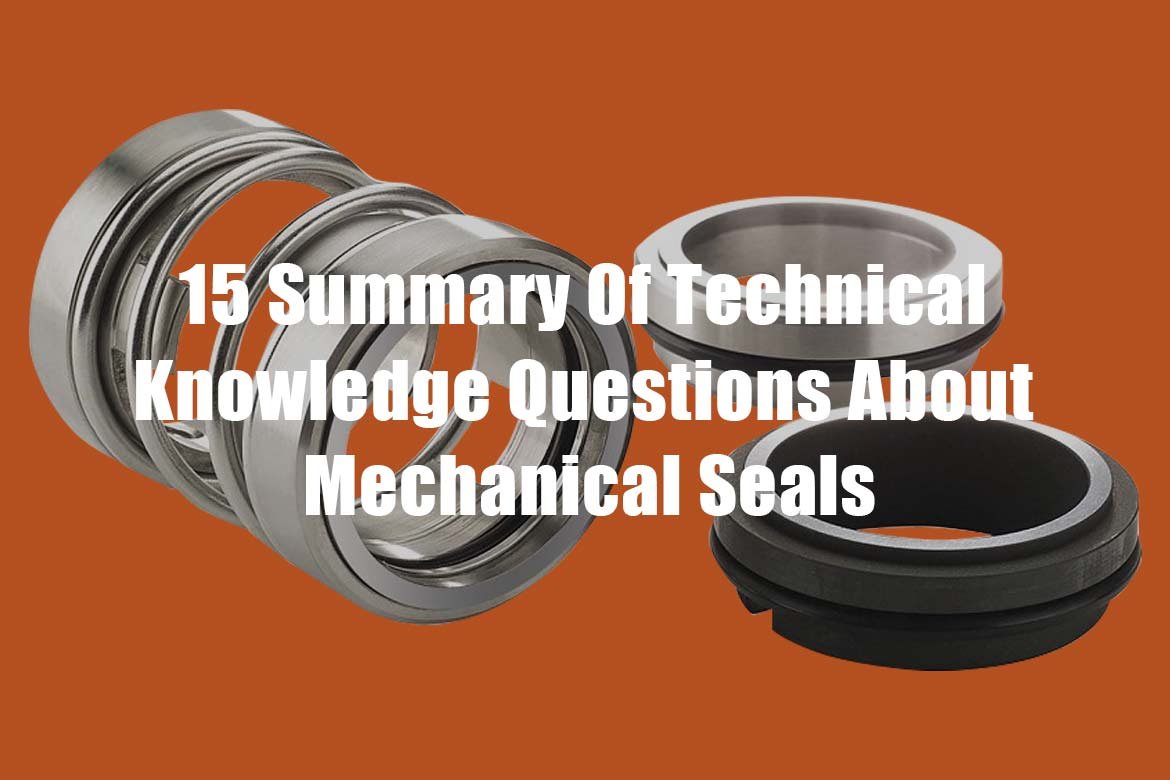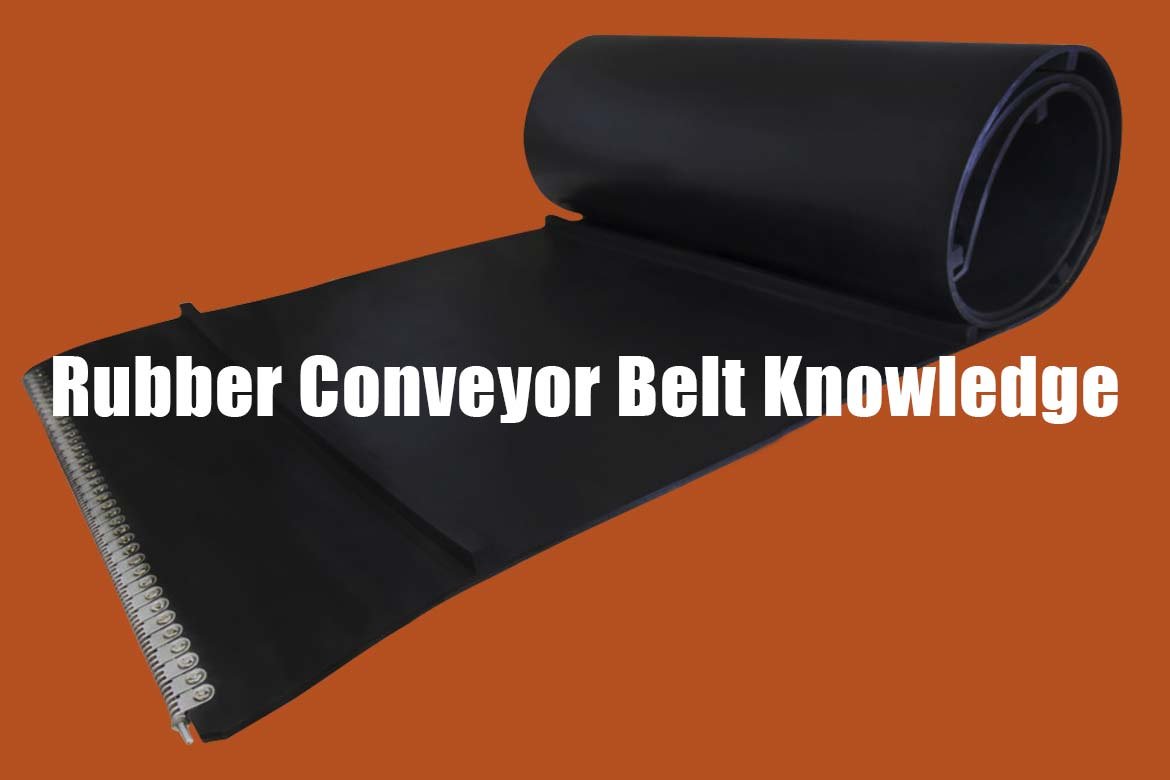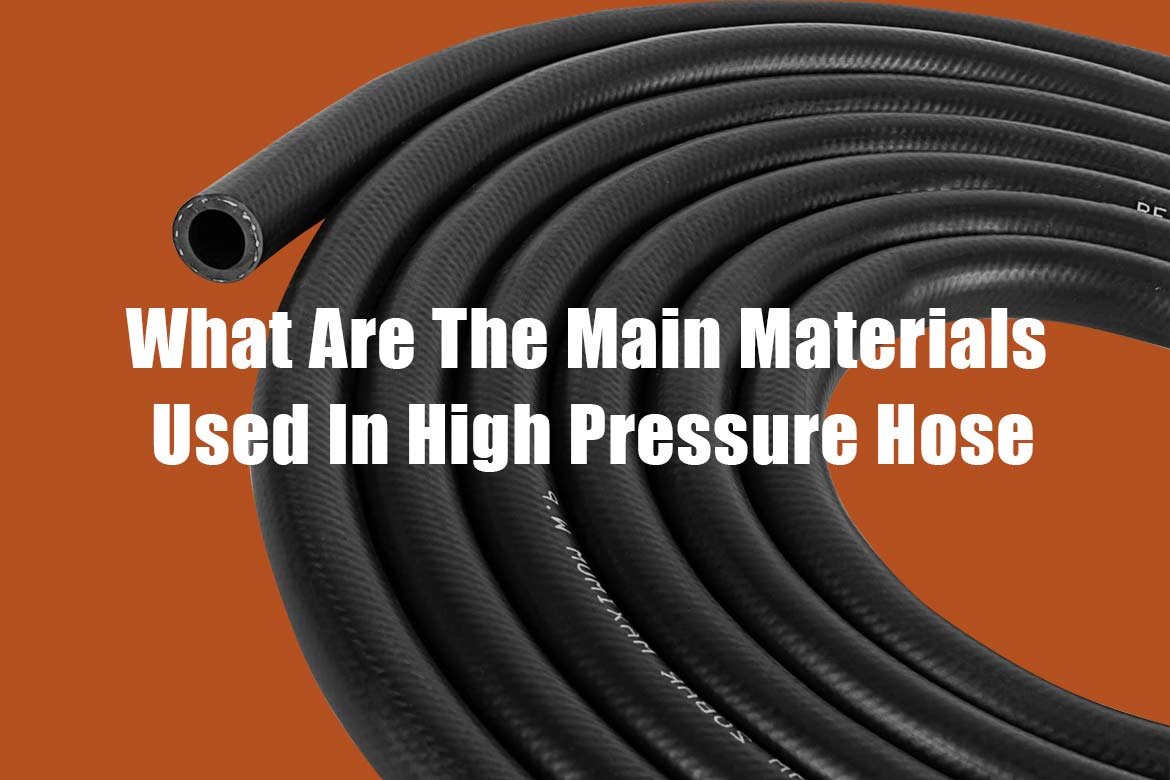In this article, 15 technical questions about mechanical seals are summarized. If you want to know more about mechanical seals, this article couldn’t be better.
1. Q: What is the working principle of floating ring seal?
A: The floating ring seal is based on the throttling effect generated in the narrow gap between the shaft and the floating ring, and injects sealing oil higher than the gas pressure into the gap in order to seal the gas.
2. Q: What are the causes of increased leakage of the floating ring seal?
A: (1) Floating ring is used for a long time, normal wear and tear so that the gap increases.
(2) The rough surface of the liner of the floating ring hole, low precision, and short time wear make the clearance increase.
(3) Improper assembly causes skewing, centering attachments fall off so that the oil flows out from other gaps so that the leakage increases.
3. Q. What is the function of the oil stop? How to measure and adjust the oil finger gap?
A: (1) The function of the oil stop is to prevent the bearing lubricant from flowing along the journal to the outside of the bearing, and there are two types of mounting positions for the oil stop, one is on the bearing housing and the other is on the shaft tile.
(2) The clearance of the oil retainer can be measured with a measuring tape when the oil retainer is disassembled or assembled. For the oil block clearance on the axial tile can be appropriately relaxed, while the oil block clearance on the bearing housing requirements are more stringent, generally require the lower part of the 0.05-0.10mm, both sides of the 0.10-0.20mm, the upper part of the 0.20-0.25mm.
4. Q: What are the factors affecting the labyrinth seal?
A: (1) Radial clearance is too large, or the clearance of the newly replaced air seal ring is too small.
(2) The sealing piece or air sealing ring, between the teeth due to wear blunt, or due to long-term friction after heat deformation, resulting in damage and can not be used.
(3) After long-term use, the spring becomes slack and deformed, so that the air seal ring can not be in place, after operation, the accumulation of dust and dirt deposits, so that the medium pressure of the seal is lower than the working medium pressure or the pressure is unstable, etc.
5. Q: What are the common types of dynamic seals?
A: Leather bowl seals, ring seals, spiral seals, pneumatic seals, hydraulic seals, centrifugal seals, packing seals, labyrinth seals, mechanical seals, etc.
A: Mechanical seals, also known as face seals, are composed of at least one pair of end faces perpendicular to the axis of rotation, under the action of fluid pressure and compensation mechanism, so that the two end faces are tightly adhered to and sliding relative to each other to form a device to prevent fluid leakage.
7. Q: How many forms of seals are commonly used in machine pumps?
A: There are two kinds. Static seals and dynamic seals.
8. Q: What are the main causes of mechanical seals leakage?
A: (1) The sealing end face between the moving ring and the static ring has too much wear and tear, and the load coefficient is not reasonable when designing so the sealing end face produces cracks, deformation, breakage, etc. (2) Several auxiliary seals are used to seal the pumps.
(2) Several auxiliary seals are defective or defective due to improper assembly, as well as the selection of auxiliary seals is not suitable for the working condition medium.
(3) Spring preload is not enough or after a long period of operation, fracture, corrosion, relaxation, cooking, as well as the working medium of the suspended particles or crystals for a long time to accumulate blocked in the spring gap, resulting in spring failure, compensation sealing ring can not float, leakage occurs.
(4) Due to the dynamic and static ring sealing end face and shaft centerline perpendicularity deviation being too large, the sealing surface is not tightly adhered to the leakage. (5) Due to the large axial movement of the shaft, and seal of the relevant parts of the coordination or quality is not easy to produce a leakage phenomenon.
9. Q: According to what selection of mechanical seals friction side of the material?
A: According to the nature of the medium, working pressure, temperature, sliding speed and other factors to be selected. Sometimes it is also necessary to consider the ability to withstand a short period of dry friction when starting or liquid film destruction.
10. Q: What are the effective ways to increase the medium resistance of the labyrinth seal?
A: (1) Reduce the gap.
(2) Strengthen the vortex.
(3) Increase the number of seal teeth.
(4) Try to convert the kinetic energy of the airflow into thermal energy.
11. Q: What are the main factors affecting the seal?
A: (1) The quality of the seal itself.
(2) Process operating conditions.
(3) Precision of assembly and installation.
(4) Precision of the main machine itself.
(5) Seal auxiliary system.
12. Q: Mechanical seals are composed of which parts?
A: Mechanical seals consist of a static ring, dynamic ring, compensation and buffer mechanism, auxiliary sealing ring, and transmission mechanism. The end faces of the static ring and dynamic ring is perpendicular to the pump axis and fit each other, constituting the rotating sealing surface.
The static ring and the gland, the dynamic ring and the shaft are sealed with the auxiliary sealing ring, and the sealing ring is pushed along the axial movement of the pump by the role of the compensation buffer mechanism to keep the end face of the dynamic ring and the static ring in contact with each other and compensate for the wear of the sealing ring’s end face.
13. Q: What are the characteristics of mechanical seals?
A: (1) good sealing performance, mechanical seals leakage is generally 0.01 ~ 5mL / h, according to special requirements, after special design, manufacturing mechanical seals leakage is only 0.01ml / h, or even smaller, and packing seal leakage of 3 ~ 80mL / h (according to China’s regulations, when the shaft diameter of not more than ? 50mm is less than or equal to 3mL / h when the shaft diameter is greater than? 50mm is less than or equal to 5mL/h).
(2) Long service life, generally more than 8000h.
(3) Small friction power, only 20%~30% of packing seal.
(4) There is no relative motion between shaft and shaft sleeve and seal, no friction, and shaft and shaft sleeve use a longer period.
(5) The sealing surface of the mechanical seal is perpendicular to the pump axis, and the seal is displaced at any time when the pump shaft vibrates, so it can still maintain good sealing performance when vibrating in a certain range.
(6) Mechanical seals rely on the sealing fluid pressure and spring force, to maintain static and dynamic ring sealing surface fit, and rely on the spring force to compensate for the amount of wear and tear, so once the deployment of the right pump is in operation generally do not need to be adjusted frequently, easy to use, maintenance work, the amount of small.
(7) A wide range of operating conditions, can be used for high temperature, low temperature, high pressure, high speed and strong corrosion, and other conditions.
(8) Troubleshooting and parts replacement are inconvenient, and can only be overhauled after stopping.
(9) Complex structure, high assembly precision, assembly, and installation have certain technical requirements.
(10) High manufacturing price.
14. Q: What are the main characteristic parameters of mechanical seals?
A: (1) Shaft diameter: The pump mechanical seal shaft diameter range is generally 6 ~ 200mm, special up to 400mm, the pump shaft diameter is usually determined by the strength requirements, rounded or the use of bushings modulation to meet the standard shaft diameter of the mechanical seal.
(2) Speed: generally the same as the pump speed, general centrifugal pump speed of ≤ 3000r/min; high-speed centrifugal pump ≤ 8000r/min; special pump ≤ 4000r/min.
(3) The average circumferential linear velocity of the sealing surface: the circumferential linear velocity of the average diameter of the sealing end face. Sealing surface average linear velocity, the sealing surface (i.e., friction) of the heat and wear and tear have a greater impact on the general mechanical seal of the circumferential linear velocity ≤ 30m / s; the application of the spring-loaded stationary mechanical seal of the circumferential linear velocity of ≤ 100m / s; up to ≤ 150m / s special.
(4) Face Specific Pressure: Face Specific Pressure ρc is the contact pressure (MPa) on the sealing surface. Face seal face pressure should be controlled within a reasonable range, too small will reduce sealing performance, and too large will increase the sealing surface heat and wear.
Pump mechanical seal reasonable face pressure value; internal mechanical seal, generally take pc = 0.3 ~ 0.6MPa; external, take pc = 0.15 ~ 0.4MPa. lubrication is good when the face pressure can be increased appropriately, the viscosity of the liquid should be increased than the end of the pressure, take pc = 0.5 ~ 0.7MPa; on volatile, lubrication of poor liquids should be taken to the end of the face of the pressure is small, take pc = 0.5 ~ 0.7MPa. For volatile, poorly lubricated liquids, a smaller end-face specific pressure should be taken, and pc=0.3~0.45MPa can be taken.
15. Q: What are the contents of the inspection of mechanical seals before assembly?
A: (1) General inspection: mainly check the parts of the type, specifications, performance, with the size and the presence of notches, pits, deformation and cracks and other damage.
(2) Inspection of moving and static rings: the sealing end face should be smooth and bright, without chipping, pitting, grooves, scratches, and other defects. For graphite rings, also dip kerosene to check whether there is a crack.
The above is all for you to share, if you have any questions or inquiries, you can contact: Крис Чжоу (zhou@sterubb.com).




